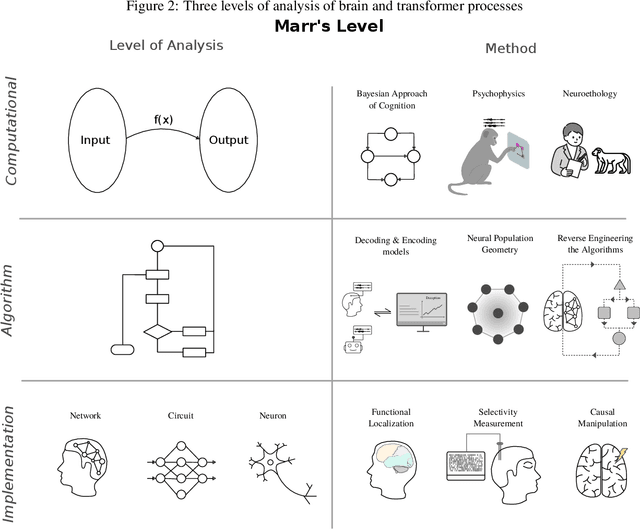Kai Sandbrink
Flexible task abstractions emerge in linear networks with fast and bounded units
Nov 06, 2024Abstract:Animals survive in dynamic environments changing at arbitrary timescales, but such data distribution shifts are a challenge to neural networks. To adapt to change, neural systems may change a large number of parameters, which is a slow process involving forgetting past information. In contrast, animals leverage distribution changes to segment their stream of experience into tasks and associate them with internal task abstracts. Animals can then respond flexibly by selecting the appropriate task abstraction. However, how such flexible task abstractions may arise in neural systems remains unknown. Here, we analyze a linear gated network where the weights and gates are jointly optimized via gradient descent, but with neuron-like constraints on the gates including a faster timescale, nonnegativity, and bounded activity. We observe that the weights self-organize into modules specialized for tasks or sub-tasks encountered, while the gates layer forms unique representations that switch the appropriate weight modules (task abstractions). We analytically reduce the learning dynamics to an effective eigenspace, revealing a virtuous cycle: fast adapting gates drive weight specialization by protecting previous knowledge, while weight specialization in turn increases the update rate of the gating layer. Task switching in the gating layer accelerates as a function of curriculum block size and task training, mirroring key findings in cognitive neuroscience. We show that the discovered task abstractions support generalization through both task and subtask composition, and we extend our findings to a non-linear network switching between two tasks. Overall, our work offers a theory of cognitive flexibility in animals as arising from joint gradient descent on synaptic and neural gating in a neural network architecture.
Multilevel Interpretability Of Artificial Neural Networks: Leveraging Framework And Methods From Neuroscience
Aug 26, 2024

Abstract:As deep learning systems are scaled up to many billions of parameters, relating their internal structure to external behaviors becomes very challenging. Although daunting, this problem is not new: Neuroscientists and cognitive scientists have accumulated decades of experience analyzing a particularly complex system - the brain. In this work, we argue that interpreting both biological and artificial neural systems requires analyzing those systems at multiple levels of analysis, with different analytic tools for each level. We first lay out a joint grand challenge among scientists who study the brain and who study artificial neural networks: understanding how distributed neural mechanisms give rise to complex cognition and behavior. We then present a series of analytical tools that can be used to analyze biological and artificial neural systems, organizing those tools according to Marr's three levels of analysis: computation/behavior, algorithm/representation, and implementation. Overall, the multilevel interpretability framework provides a principled way to tackle neural system complexity; links structure, computation, and behavior; clarifies assumptions and research priorities at each level; and paves the way toward a unified effort for understanding intelligent systems, may they be biological or artificial.
Rethinking Out-of-Distribution Detection for Reinforcement Learning: Advancing Methods for Evaluation and Detection
Apr 10, 2024Abstract:While reinforcement learning (RL) algorithms have been successfully applied across numerous sequential decision-making problems, their generalization to unforeseen testing environments remains a significant concern. In this paper, we study the problem of out-of-distribution (OOD) detection in RL, which focuses on identifying situations at test time that RL agents have not encountered in their training environments. We first propose a clarification of terminology for OOD detection in RL, which aligns it with the literature from other machine learning domains. We then present new benchmark scenarios for OOD detection, which introduce anomalies with temporal autocorrelation into different components of the agent-environment loop. We argue that such scenarios have been understudied in the current literature, despite their relevance to real-world situations. Confirming our theoretical predictions, our experimental results suggest that state-of-the-art OOD detectors are not able to identify such anomalies. To address this problem, we propose a novel method for OOD detection, which we call DEXTER (Detection via Extraction of Time Series Representations). By treating environment observations as time series data, DEXTER extracts salient time series features, and then leverages an ensemble of isolation forest algorithms to detect anomalies. We find that DEXTER can reliably identify anomalies across benchmark scenarios, exhibiting superior performance compared to both state-of-the-art OOD detectors and high-dimensional changepoint detectors adopted from statistics.
 Add to Chrome
Add to Chrome Add to Firefox
Add to Firefox Add to Edge
Add to Edge